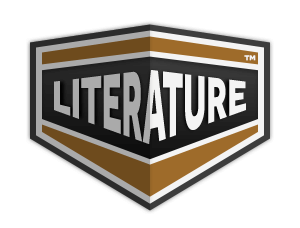The natives of British Central Africa
- 47 Downloads
of alluvial land is so level and devoid of natural features that, in the rainy season, there is usually one navigable channel, if not more, cutting it off into an island, by connecting the Shiré and Zambezi. On the eastern bank we have left Mount Morambala behind—a massive ridge, extending over several miles and reaching a height of 4000 feet. Beyond the flats in the north-east you see the strangely shaped cone of Chinga-Chinga Mountain against the sky, and later on other ranges come into view; but just here the river valley is a marsh (some parts of it an actual lake) in the wet season, and a dusty plain at the end of the dry. The Portuguese territory on the eastern bank extends a little farther north till it reaches a more tangible boundary in the river Ruo, which rushes down from Matapwiri’s Mountain in the north-east, throwing itself over a fall of 200 feet, and then, winding through the same sort of plain as that already described, enters the Shiré through a sort of miniature delta, by the reedy island of Malo and the ‘lip’ of land where now stands the British township of Chiromo. I have spoken all along of the Shiré River; and it is not now to be expected that Europeans will ever call it anything else; but it is perhaps unnecessary to say that no native, unless thoroughly accustomed to Europeans and their ways, would ever know it by that name. To him it is the Nyanja, or, if he happens to be a Yao, the Nyasa—a word which means any large body of water, whether river or lake. To those living near Lake Nyasa, it is the lake which is Nyanja or Nyasa, as the case may be; it is only European usage which has stereotyped the Yao word on our maps. Chiri, in the Mang’anja language, means ‘a steep bank,’ and was misunderstood (by the Portuguese, probably, as it seems to have been in use before Livingstone penetrated the country) as the name of the river; since a native would say, ‘I am going to the bank,’ where we should say, ‘I am going to the river.’ As Sir H. H. Johnston has remarked, the Zambezi is the only one of the four great African rivers which bears a name given by, or even known to, the people dwelling on it. Roughly speaking, the British Protectorate, to which we have been referring, comprises the basin of Lake Nyasa and its outlet, the Shiré. This general statement, of course, requires some qualification. The north end of the lake (the British boundary is the Songwe River, running out in about 10° of S. latitude) and nearly half the eastern side are German; south of that, i.e. from 11° 30´ S. to Fort Maguire, is Portuguese. From Fort Maguire, the border-line runs south-east to the small lake called Chiuta, then south, by the salt lake Chilwa and Mlanje Mountain to the Ruo. The western frontier of the Protectorate is an irregular line, following more or less the watershed between the streams that flow into the lake and those that flow into the Luangwa (a tributary of the Zambezi which,
Translation
Translate and read this book in other languages:
Select another language:
- - Select -
- 简体中文 (Chinese - Simplified)
- 繁體中文 (Chinese - Traditional)
- Español (Spanish)
- Esperanto (Esperanto)
- 日本語 (Japanese)
- Português (Portuguese)
- Deutsch (German)
- العربية (Arabic)
- Français (French)
- Русский (Russian)
- ಕನ್ನಡ (Kannada)
- 한국어 (Korean)
- עברית (Hebrew)
- Gaeilge (Irish)
- Українська (Ukrainian)
- اردو (Urdu)
- Magyar (Hungarian)
- मानक हिन्दी (Hindi)
- Indonesia (Indonesian)
- Italiano (Italian)
- தமிழ் (Tamil)
- Türkçe (Turkish)
- తెలుగు (Telugu)
- ภาษาไทย (Thai)
- Tiếng Việt (Vietnamese)
- Čeština (Czech)
- Polski (Polish)
- Bahasa Indonesia (Indonesian)
- Românește (Romanian)
- Nederlands (Dutch)
- Ελληνικά (Greek)
- Latinum (Latin)
- Svenska (Swedish)
- Dansk (Danish)
- Suomi (Finnish)
- فارسی (Persian)
- ייִדיש (Yiddish)
- հայերեն (Armenian)
- Norsk (Norwegian)
- English (English)
Citation
Use the citation below to add this book to your bibliography:
Style:MLAChicagoAPA
"The natives of British Central Africa Books." Literature.com. STANDS4 LLC, 2024. Web. 22 Oct. 2024. <https://www.literature.com/book/the_natives_of_british_central_africa_71018>.

